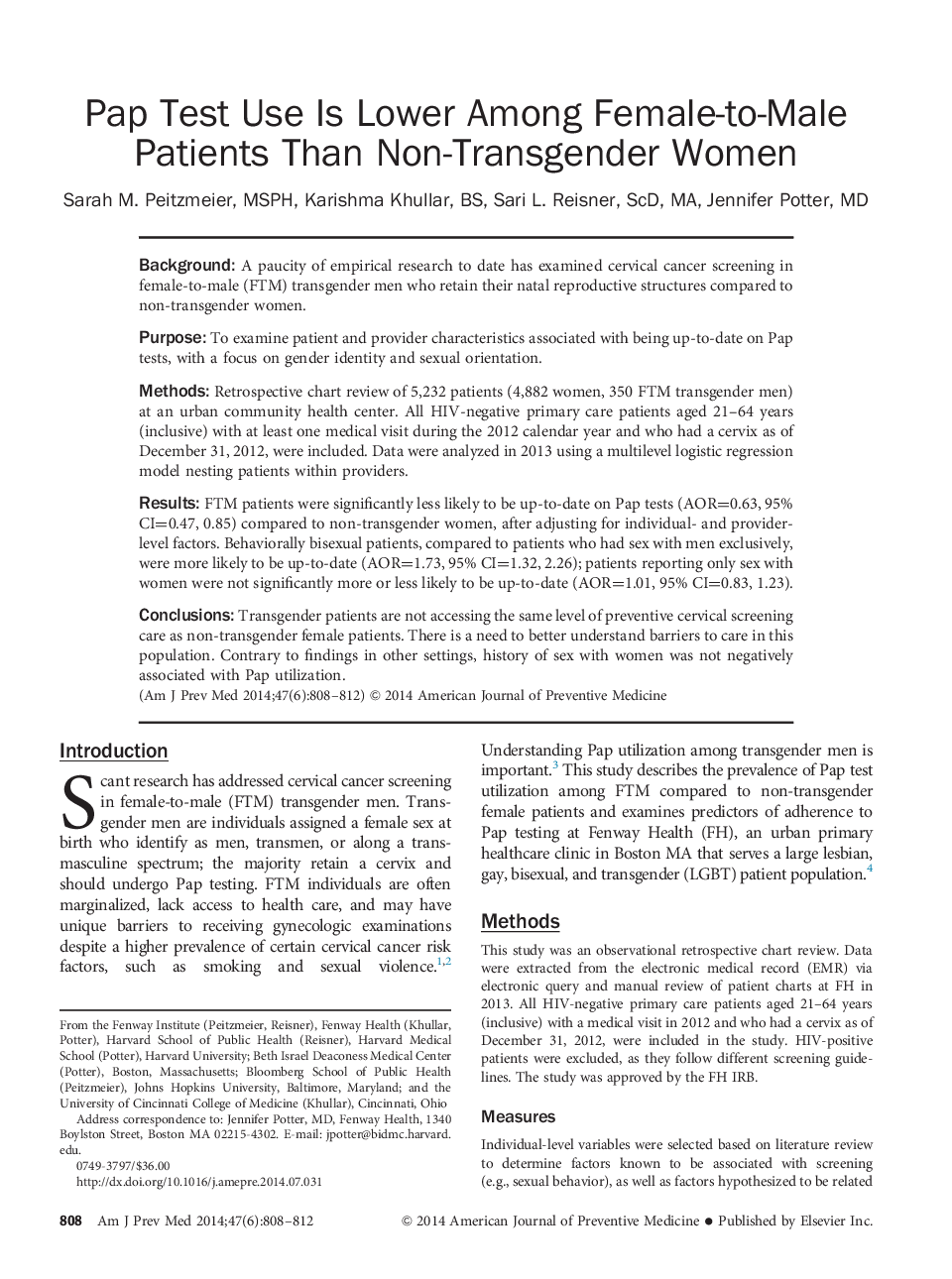| Article ID | Journal | Published Year | Pages | File Type |
|---|---|---|---|---|
| 6237944 | American Journal of Preventive Medicine | 2014 | 5 Pages |
BackgroundA paucity of empirical research to date has examined cervical cancer screening in female-to-male (FTM) transgender men who retain their natal reproductive structures compared to non-transgender women.PurposeTo examine patient and provider characteristics associated with being up-to-date on Pap tests, with a focus on gender identity and sexual orientation.MethodsRetrospective chart review of 5,232 patients (4,882 women, 350 FTM transgender men) at an urban community health center. All HIV-negative primary care patients aged 21-64 years (inclusive) with at least one medical visit during the 2012 calendar year and who had a cervix as of December 31, 2012, were included. Data were analyzed in 2013 using a multilevel logistic regression model nesting patients within providers.ResultsFTM patients were significantly less likely to be up-to-date on Pap tests (AOR=0.63, 95% CI=0.47, 0.85) compared to non-transgender women, after adjusting for individual- and provider-level factors. Behaviorally bisexual patients, compared to patients who had sex with men exclusively, were more likely to be up-to-date (AOR=1.73, 95% CI=1.32, 2.26); patients reporting only sex with women were not significantly more or less likely to be up-to-date (AOR=1.01, 95% CI=0.83, 1.23).ConclusionsTransgender patients are not accessing the same level of preventive cervical screening care as non-transgender female patients. There is a need to better understand barriers to care in this population. Contrary to findings in other settings, history of sex with women was not negatively associated with Pap utilization.
